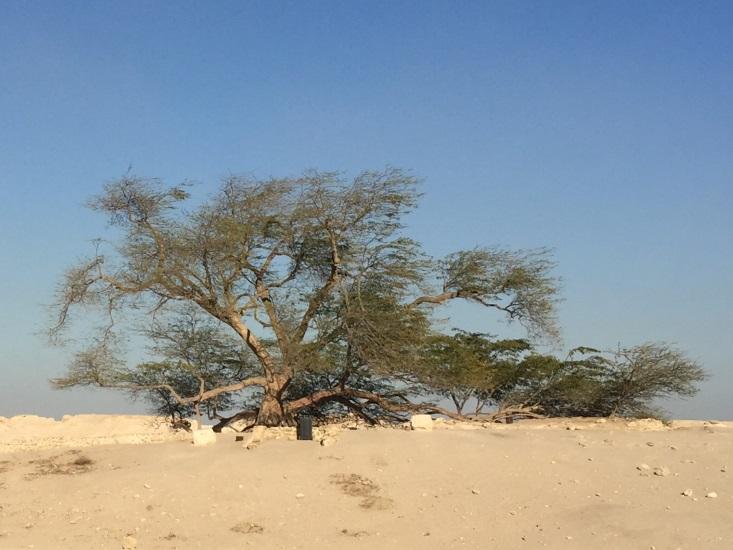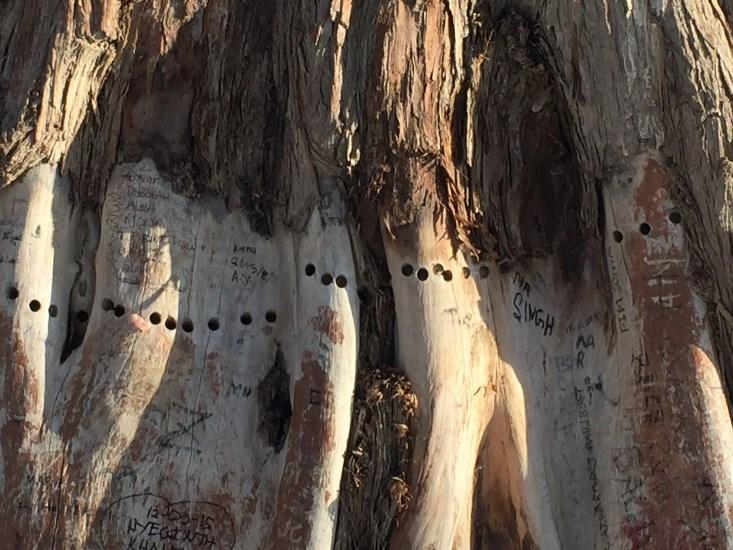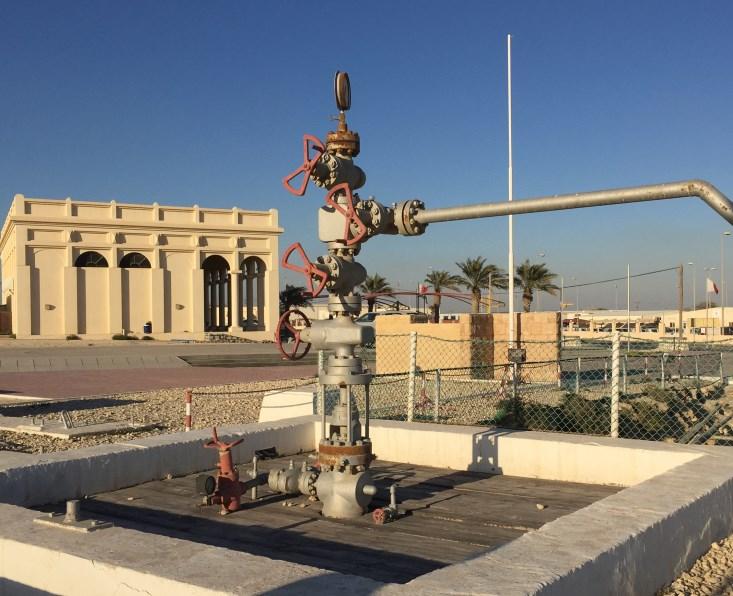Bahrain’s “Tree of Life” is a beauty. Low and wide, its thick, craggy branches dive under the surface of the desert before curving back up toward the hot sun. Delicate, feathery leaves flutter at its edge.
It’s also profoundly alone. Diminutive shrubs dot this sandy wasteland, but there’s not another tree in sight, across miles of open terrain.

The mystery of this old, lonesome tree has captivated locals, perhaps for centuries; today it is one of the Bahrain’s top tourist attractions, adorning souvenir mugs and drawing visitors like me from around the world to this barren part of the country. One local legend has it that Bahrain, a small archipelago off the Persian Gulf coast of Saudi Arabia, is the site of the biblical Garden of Eden, and that the tree is a vestige of that paradise. (The Bible does mention a “tree of life” in the Garden of Eden, in addition to the more well-known “tree of knowledge of good and evil.”) Another legend claims that the tree has been around since pre-Islamic times and is protected by the ancient Sumerian god Enki.
Until recently, facts about this tree have been hard to come by. For example, Bahrain’s government publications regularly refer to a 1986 tree-ring study “in cooperation with the Smithsonian Natural History Museum” that found that the tree sprouted in about 1583, making it more than 400 years old. Evidence of that study—nearly 30 small, regular holes—is plainly visible on the trunk, but neither I nor a Smithsonian librarian could find any published paper that came out of it. While searching popular articles, guidebooks, and scientific papers, I was baffled to find the tree identified as at least four different species—some legitimate possibilities, some plainly wrong.

Fortunately, in the past few years, Bahrain has invested in studying and preserving this national treasure, and the evidence is coalescing into a narrative—one that’s just as fascinating and weird as the legends. For one thing, the three-year-old visitor center points to the likelihood that the tree is an example of Prosopis juliflora1, a type of mesquite. P. juliflora is prized as a source of food and wood in hot, dry, salty environments where virtually nothing else will grow. The secrets to its success are a taproot that can reach down to water some 115 feet (35 meters) beneath the surface, compound leaves that help disseminate heat, and a tolerance for saline environments, which may be increasingly important as Bahrain degrades its aquifers with over-extraction. Symbiotic fungi may help improve its uptake of water and nutrients from the soil.
The odd thing about P. juliflora—and the thing that might have confused some experts—is that it’s native to the Americas. (The Tree of Life has sometimes been identified as Prosopis cineraria, a similar species native to Asia, but experts categorize it as the imported juliflora.) In the 20th century, the species spread around the world as many countries intentionally introduced it, a plan that backfired in some places when it grew weedy and sometimes out-competed native plants. In the Middle East, introductions took place in the 1950s. But the Tree of Life strongly suggests that traders first brought it much earlier than that—if the story of the tree-ring study is right, as early as about 100 years after the first contact with the New World, when the island was briefly under Portuguese rule.
I can imagine how special it might have seemed to have this foreign specimen in hand for the first time—so special that people might have given it a place of pride in their village. In 2010, archaeologists from Bahrain’s Ministry of Culture excavated the small tell—the layer cake of human habitation remains—on which the tree sits. They concluded that the site was likely last a military outpost, abandoned in the 16th or 17th century. The tree itself seems to grow in or near the settlement’s source of fresh water—a well or spring that may offer access to an unknown water table. Did the outpost’s soldiers intentionally plant it by their precious source, or did it just hitch a lucky ride in a trader’s bag? Either way, the prime spot gave the immigrant its best shot at success, since Prosopis trees must tap water within the first few years or die.
What we do know is that the tree survived, possibly protected at first by its isolation, and then by the legends that people started telling about it. In the past decades, that protective power started to break down, as roads made it easier to get to. (It’s now only 35 minutes by car from the capital city of Manama.) Vandals started to do serious damage by carving their names in it. Others burned it, apparently in religious rites. The government stepped in in 2013, encircling the tree with a recessed concrete wall and pathway that at least prevent cars from getting too close and seems to also have stopped the worst of the vandalism; today, those who want to write their names generally stick to permanent marker. The tourists I saw approached with curiosity and reverence.
This part of the main island is light on places of interest, so most tourists also make a stop just a few kilometers down the road, where an altogether different kind of tree rises from the same desert sand. If you are feeling dramatic, you might call it the “tree of death,” as it once tapped into the fossilized remains of organisms long deceased—but it’s really called Well Number 1. No longer in operation, the aging contraption serves as a monument to when oil was found here in 1931, the very first oil produced on this side of the Persian Gulf. It was a discovery that would profoundly transform Bahrain and the region. At that point, the Tree of Life was perhaps already 350 years old.

It was only after I visited this second tree that I felt the full poignancy of the first. The Tree of Life literally embodies so much history—from the earliest, momentous exchanges with the New World to the first glugs of the global petroleum trade. It sucks clean water from an ancient well, absorbs toxic exhaust from cars idling nearby, and converts carbon dioxide from the world’s industrial processes into food for itself. If it lives until the day that the fossil fuels run dry (which, for Bahrain, may be soon: Just as it was the first in its region to find crude, it’s projected to be the first that runs out), the tree will register that change, too. Its bark, rings, and roots bear witness to centuries. That’s enough to make the Tree of Life a legend to me.
Chelsea Wald is a science writer in Vienna, Austria, who writes often for Nautilus.
Footnote
1. Thanks to plant ecologist Ahmad K. Hegazy of Cairo University for his help in tracking down this identification.






























